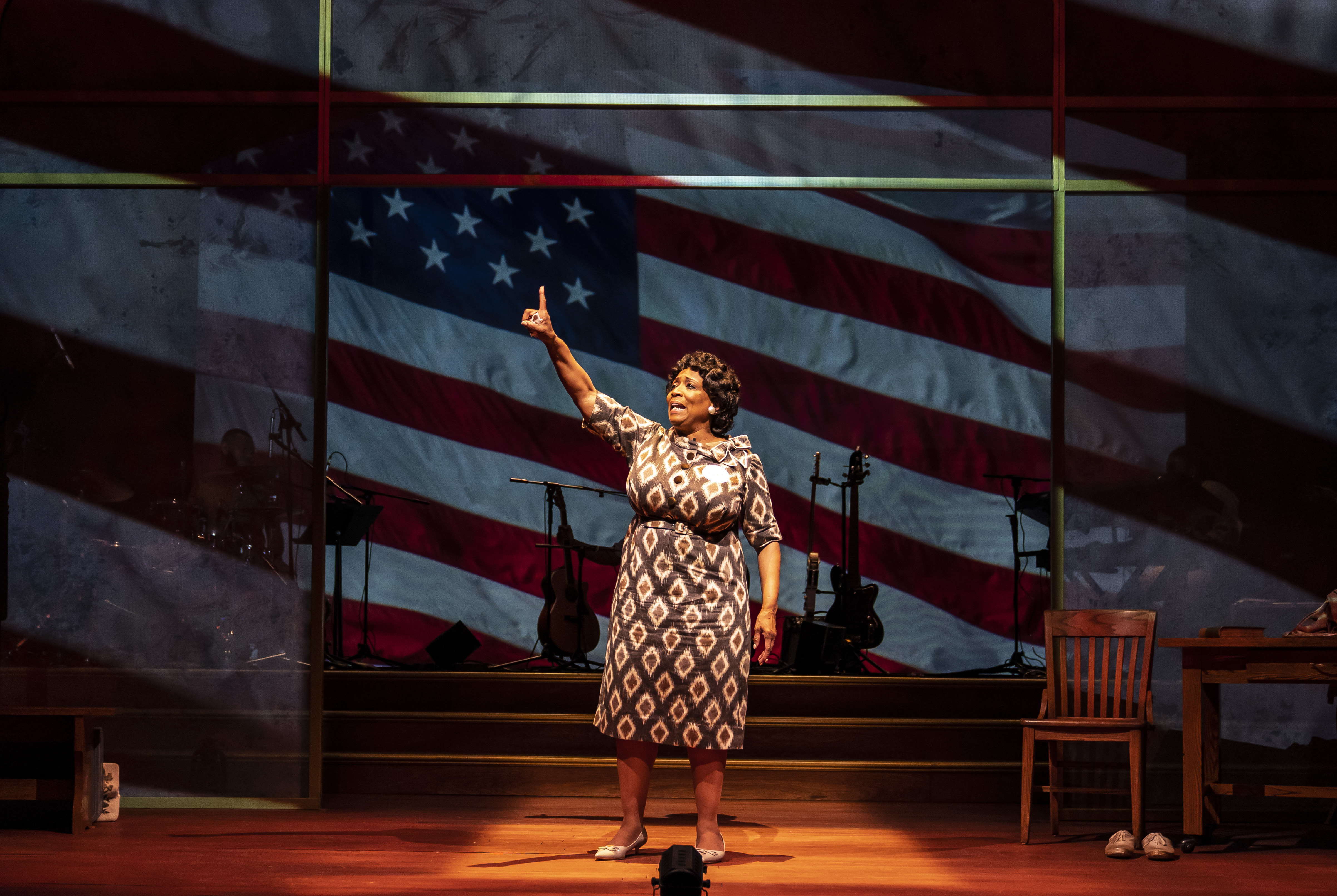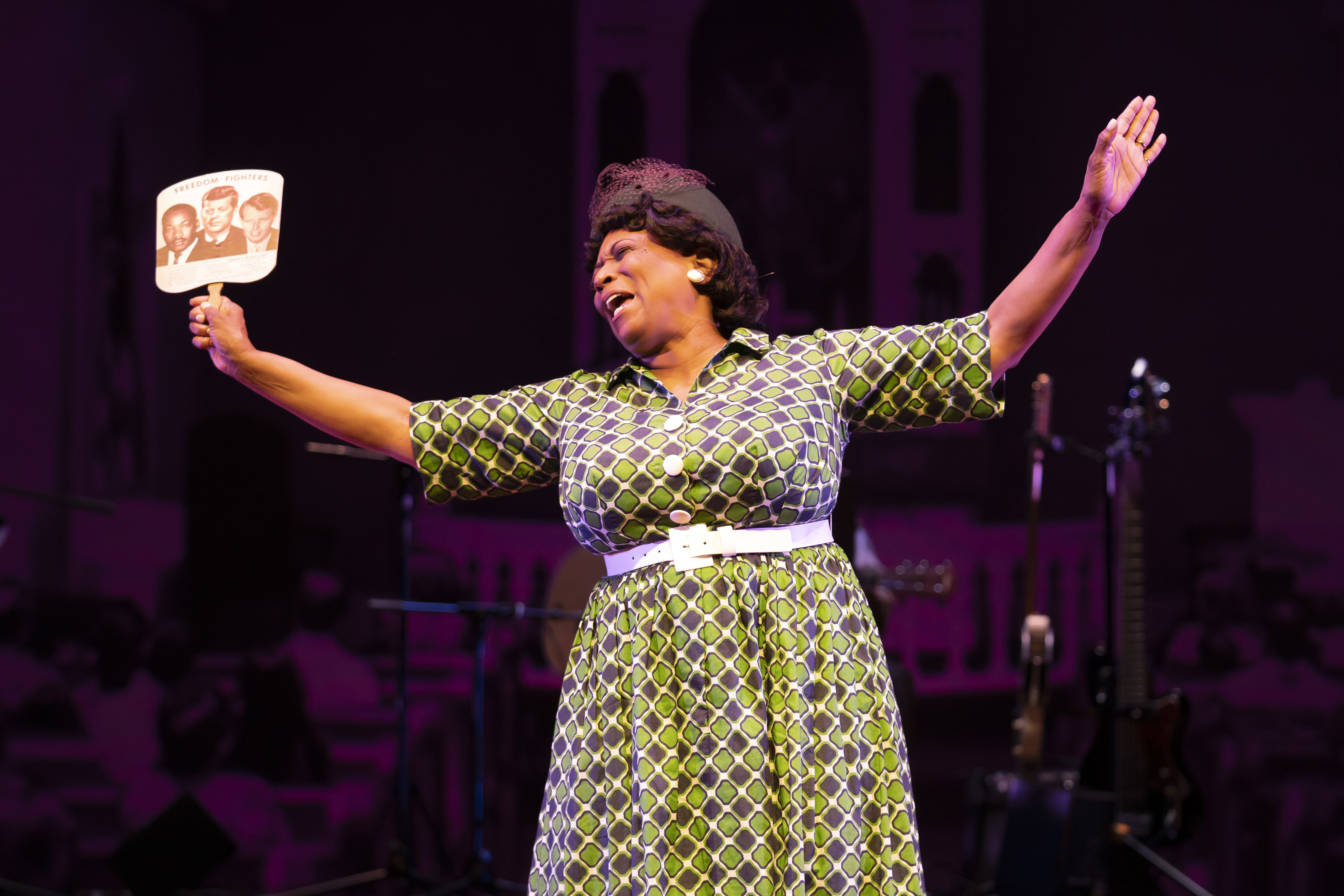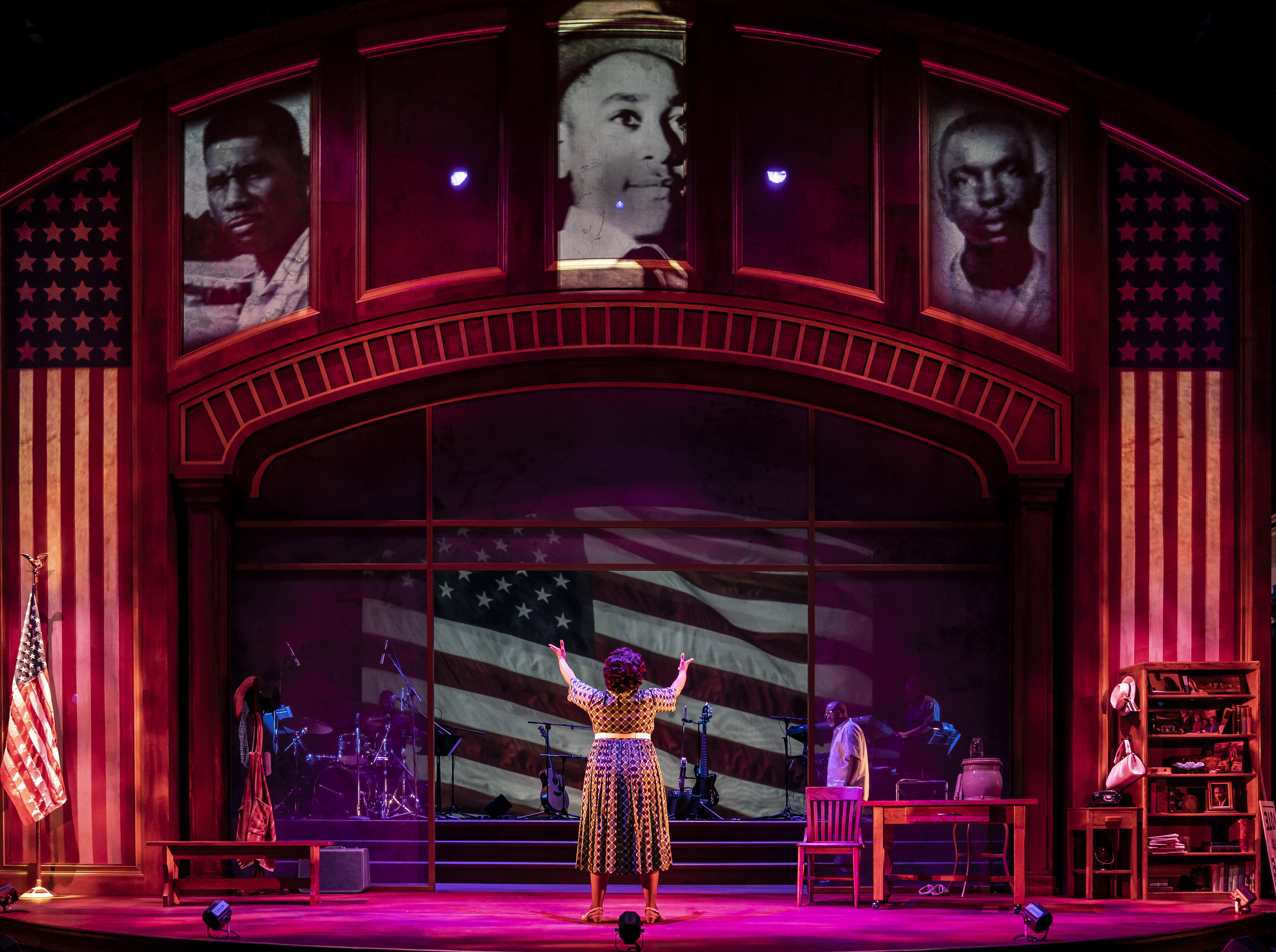Bringing the Past into the Present Through Song With Fannie
Review of Fannie: The Music and Life of Fannie Lou Hamer presented by Seattle Rep
Written by Teen Writer Josephine Bishop and edited by Teen Editor Lucia McLaren

The stage opens to a quaint, wooden room. There is nothing but a small bookshelf and desk to the right, and to the left, a bare bench and coat hanger. An American flag stands basked in the bright glow of a spotlight. Littered about the theatre, there are signs that read: “We demand equal rights now!”, “Jim Crow must go!”, “We demand voting rights now!”, and “In freedom we are born, in freedom we must live!”.
Fannie: The Music and Life of Fannie Lou Hamer begins with Fannie Lou Hamer—usually played by E. Faye Butler, but for that afternoon’s show by Shaunyce Omar—walking onto the stage to speak at a podium. Hamer’s voice is loud and captivating as she begins her retelling of attempting and failing to vote when suddenly, the podium is pulled away. President Lyndon B. Johnson has ordered a spontaneous conference at the White House solely to take away the focus from Hamer’s testimony. This scene, simple as it may be, makes you angry on Hamer’s behalf and is our first taste of the heart-wrenching injustices that will take place later on.
Accompanied by a trio of onstage musicians—Morgan E., Felton Offard, and Timothy Davis—Fannie takes a musical route. As shown in many scenes, music seems to be one thing Hamer consistently turns to when in need of consolation. When a white police officer pulls over a bus full of protesters, she sings to summon fearlessness and bravery. When she is beaten to the point of permanent harm, she sings to summon love and hope. Time and time again throughout the show, Hamer sings to gather the courage to keep going.

While many aspects of this performance were spectacular, others didn’t quite live up to my expectations. I know some of the most impactful parts of Fannie Lou Hamer’s story took place in her adult life, but I would have loved to dive a bit deeper into her childhood and how the events that took place then may have influenced her later actions. Additionally, the set, apart from the signs, was a bit bland and uninteresting. At the same time, because of the boring set, it allowed for more focus on the overall performance, which was a fantastic deliberate decision that made the set interesting and functional without taking away from the story.
For me, going to live performances in which the actors and audience interact has always been pretty nerve-wracking. I find myself listening too hard to what’s being said on stage to make sure I’m not missing any kind of cue, rather than simply enjoying the performance. This, however, was not the case in Fannie. I was able to relax, and instead of my participation feeling forced and uncomfortable, I was able to cheer, clap, and sing along not just when I was instructed to, but when I felt it was fitting. What’s the point of having an audience that’s involved but not invested?

Through my participation, I forged a much greater understanding of Hamer. At the beginning of the play, she is presented as a cheerful, funny, easy-to-please kind of person. However, as the show progresses, she becomes less and less satisfied with the way she is treated. After her life-threatening beating in jail, this is shown with an emotional performance of the song “I’ve Been Changed”, in which Hamer expresses how this traumatic experience has left her permanently altered. The acting in this one-woman show did not fall flat. This production will make you laugh, cry, cheer, and everything in between.
Fannie highlights many important issues that are still widely overlooked today. It emphasizes how discrimination didn’t end with getting voting rights but is still extremely prominent in many people’s day-to-day lives. While I thoroughly enjoyed the majority of this performance, I thought that the end could have been a bit more exciting and impactful. The play ends with the cliché, “We are all humans,'' speech, which was incredibly anticlimactic. But then again, how do you end a retelling of a story that was never quite finished? Hamer exits the stage holding up one of the many signs that were scattered around the theatre, her face set in pure determination. The stage goes dark, and we are left with a projected image of Fannie Lou Hamer and text that reads: “Fannie dies from complications of hypertension and breast cancer. She is just 59 years old”.

The producer Cheryl L. West takes the audience on an emotional journey full of ups and downs, laughter, tears, sheer will, and determination. For 70 minutes, Hamer sings, preaches, and conducts us through this powerful tale without once breaking character. It is a performance for the ages and a story that must be heard. Fannie tastefully shows what life was like for a Black woman amid the civil rights movement without cutting corners or censoring the truth. Some moments in this performance will make you uncomfortable, some will make you want to look away, some will make you really think—and that’s the whole point. All in all, my experience with this show will not be one soon forgotten.
Lead Photo: E. Faye Butler in Fannie: The Music and Life of Fannie Lou Hamer at Goodman Theatre. Photo by Liz Lauren.
The TeenTix Newsroom is a group of teen writers led by the Teen Editorial Staff. For each review, Newsroom writers work individually with a teen editor to polish their writing for publication. The Teen Editorial Staff is made up of 6 teens who curate the review portion of the TeenTix blog. More information about the Teen Editorial Staff can be found HERE.
The TeenTix Press Corps promotes critical thinking, communication, and information literacy through criticism and journalism practice for teens. For more information about the Press Corps program see HERE.

